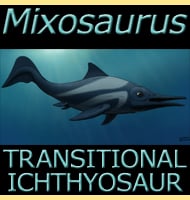In Depth
Once described as a new species of Protocetus, the holotype remains were elevated to genus level in 1975. Although a different genus, Andrewsiphius would have still been a primitive toothed whale form similar to the more famous Protocetus. The rear limbs would still have been visible on the outside of the body, while propulsion was provided by the up and down undulation of the tail.
Further Reading
- Lower Tertiary vertebrates from western India, A. Sahni & V. P. Mishra - 1975. - A new species of Protocetus (Cetacea) from the Middle Eocene of Kutch, western India, A. Sahni & V. P. Mishra 1972. – New Skeletal Material of Andrewsiphius and Kutchicetus, Two Eocene Cetaceans from India. – Journal of Paleontology. 83 (5): 635–63. – J. G. M. Thewissen & Sunil Bajpai – 2009.









